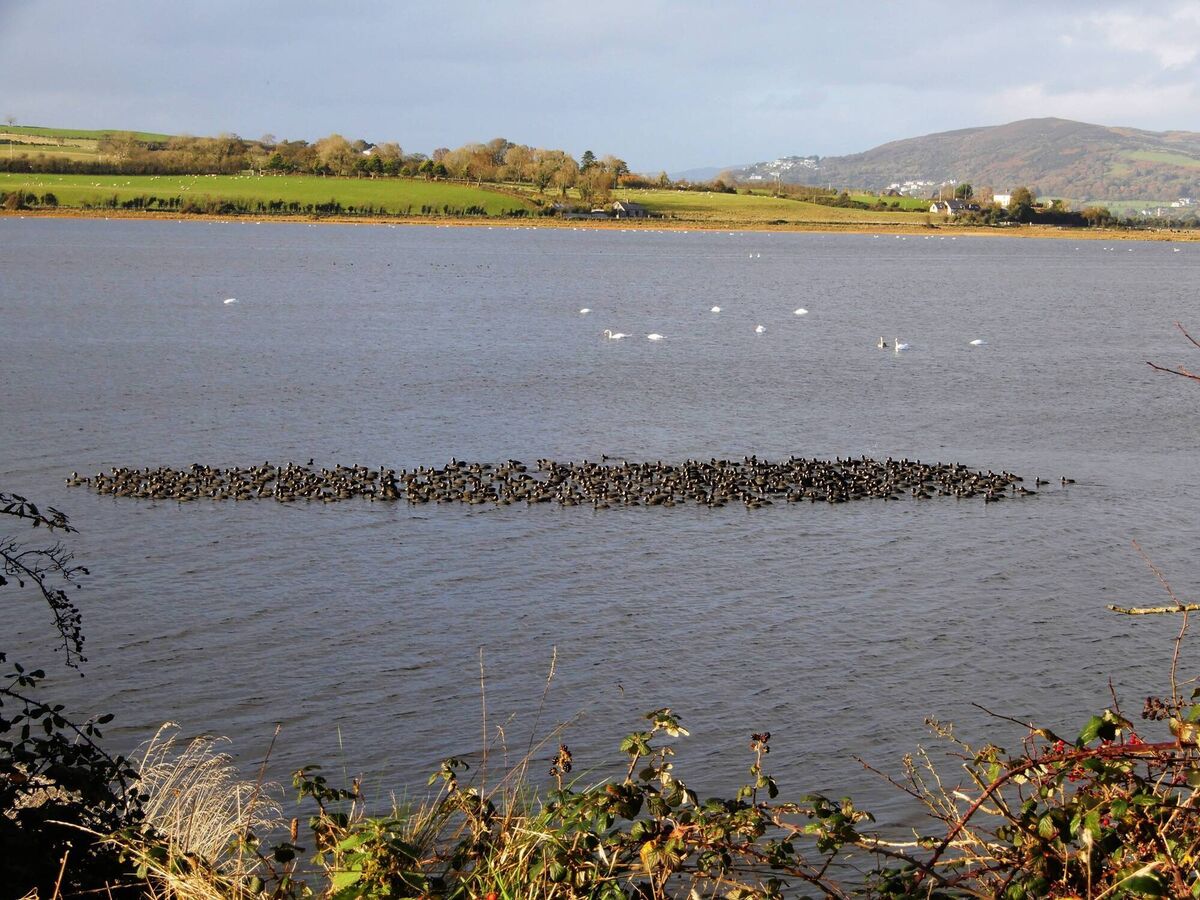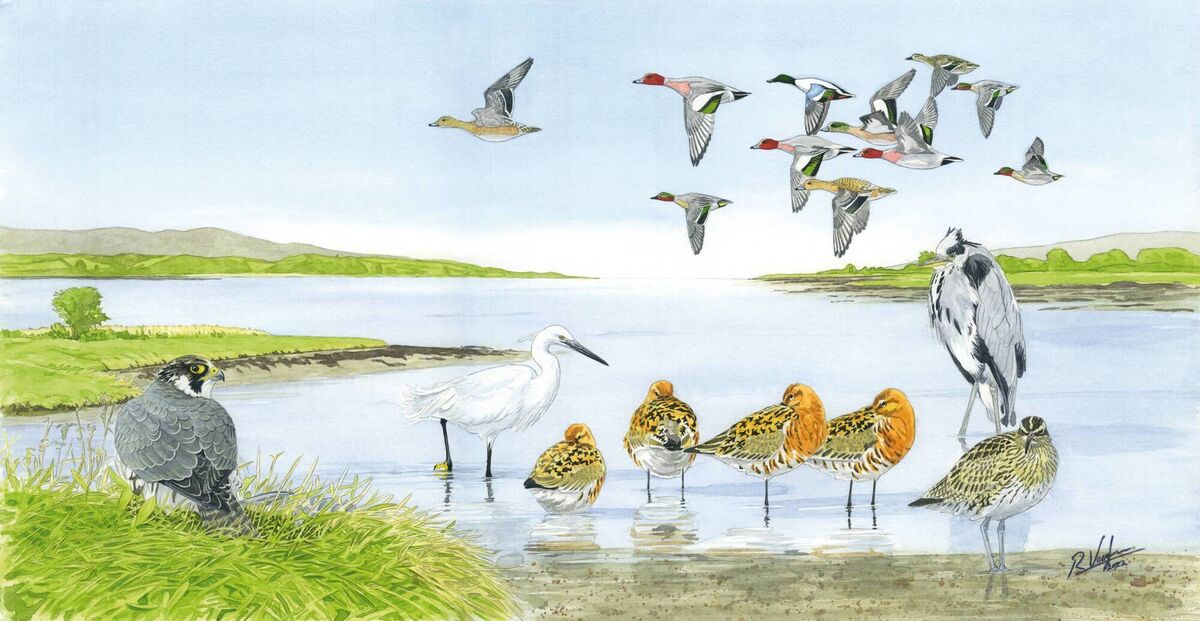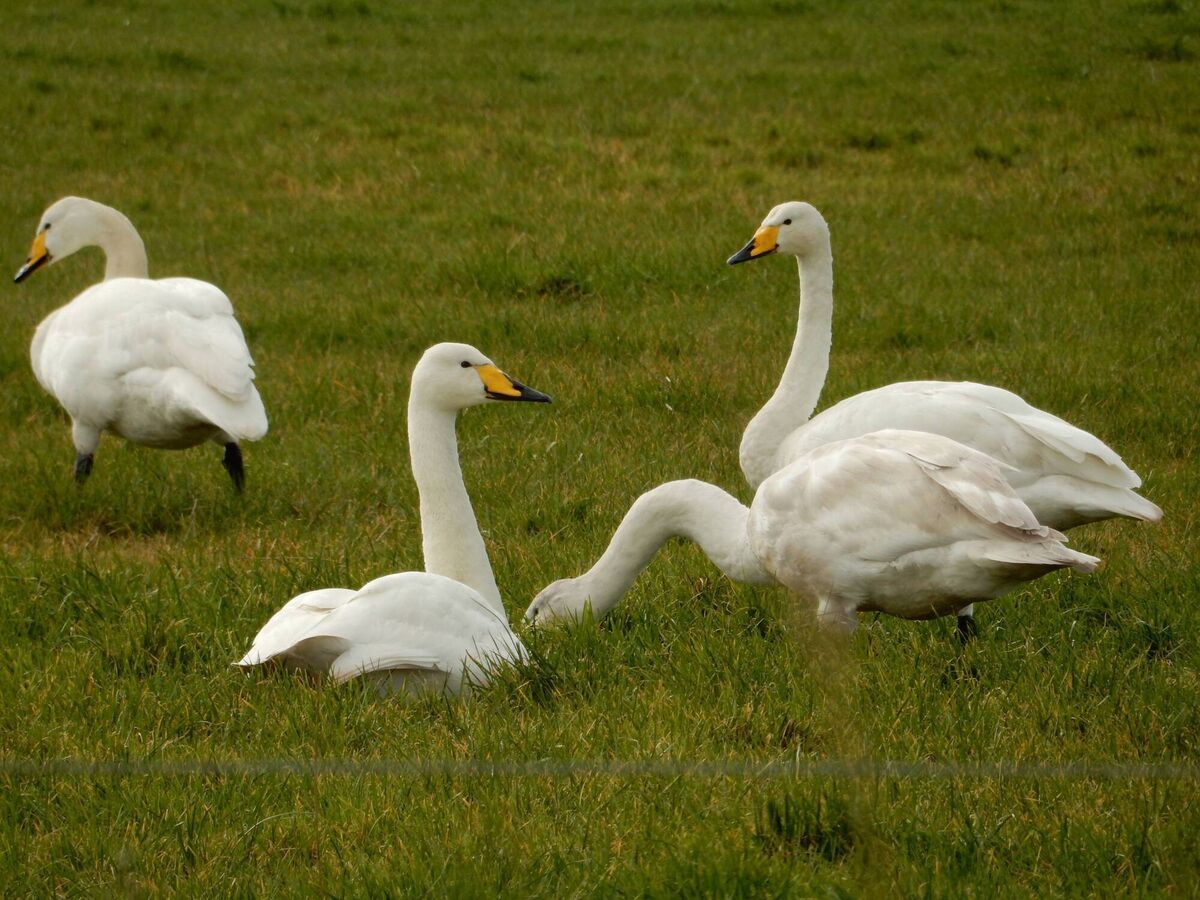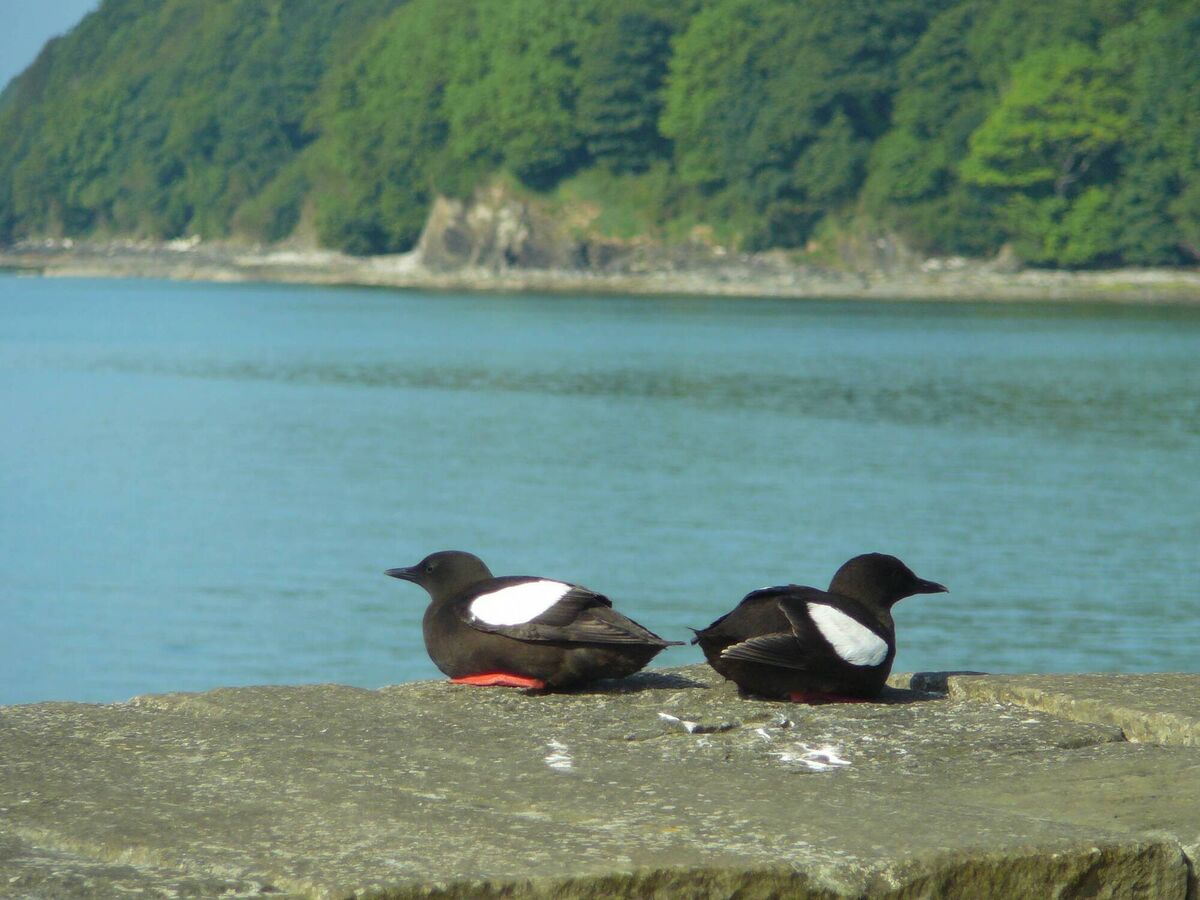The birds of County Donegal — some doing well and others almost gone... with climate change likely to see them out

The Birds of County Donegal: spotted flycatcher, Carnowen. Picture: Ralph Sheppard
Donegal has two important mountainous areas, in the north west highlands and the Blue Stack Mountains, and two other significant areas of high ground — central Inishowen in the north-east, and the south-west promontory. These are all based on either granite or quartzite, so in theory the acidic peat soils derived from both rock types should be supporting vegetation dominated by heather on better-drained land, and by sedges and Sphagnum mosses on the wetter bog surfaces.
In practice, overgrazing by sheep in recent times has greatly reduced the density of heather. Sheltered gullies in the mountain zone can often retain fragments of woodland, and crags that are inaccessible to sheep and deer, even if treeless, can give refuge to elements of woodland flora, or at least scrubby heath.
These habitats, along with streams and lakes and larger remnants of oak woodland, can all be found at Glenveagh, which highlights the best that can be found throughout the Donegal uplands. From the birdwatchers’ point of view, Glenveagh is a hint of what is typical of the Scottish Highlands but rare or absent throughout the rest of Ireland, which adds spice to the rich and varied bird communities of the national park.

The dominant vegetation of most of the upland zone is bog. If there is more than a metre of peat blanketing the landscape it is defined, not unreasonably, as blanket bog. Where the peat is shallow it is called wet heath — the variant usually found on the higher slopes and on rocky landscapes. The flatter terrains often have at their centre dense networks of small dark pools. They appear to be random and interlinked, but an aerial view reveals patterns which indicate that the bog is stretching, with separate pools opened up and shaped by gravitation.
The central hills have similar vegetation, but being at lower altitude they are much more altered by human activity — mainly peat cutting and afforestation, and of course more sheep-grazing.
Meadow pipits, skylarks, and wheatears are ubiquitous in the uplands.
Their numbers are generally an indication of the abundance of insects and the health of the habitats. If these birds are numerous, so too will be raptors like peregrine and merlin. Red grouse feed on heather although their chicks start off on insects before they can cope with an adult diet. They too will be indicators of the health of the uplands. Surveys of the habitat and of individual species indicate that while the situation has deteriorated, it is not as bad as might have been expected.

But there is no doubt that uplands are under severe pressure. Grazing by sheep could be regulated by national policies on farming. Buildings, roads, power lines and other developments continue to reduce and fragment the areas of unbroken habitat. This leaves ground-nesting birds more vulnerable to general predators like foxes and hooded crows, never mind the alien mink — the encroachment of human activity and nest predation by mink are the main problems facing our tiny population of red-throated divers.
Ring ouzel is a declining mountain species. Grazing by sheep or deer in the high, rocky gullies favoured by these birds has probably reduced their suitability. Climate change is undoubtedly involved, although in what way is not yet exactly clear. It can affect plants and animals in many ways, such as the destruction or degradation of habitats by uncontrolled wildfires — which seem to be more frequent and more severe with every passing year.

The breeding waders, golden plover, dunlin, and curlew are also affected, but they could hopefully respond to management of the overall upland environment.
With a bit of luck, you might expect to find breeding dunlin, but they have now almost gone and climate change is likely to see them out. Golden plover are also declining, but red grouse are still quite widespread across the county, albeit at low density. The abundant species are meadow pipit and skylark, which sustain a thin but quite healthy population of merlin, although almost any of our less (or differently) specialised raptor species can also be found.

The logo of the Glenveagh National Park is a red-throated diver.
Although they do not breed on Lough Beagh, birds in breeding plumage can be seen there in the summer months. A handful of pairs do breed in our upland lakes, at the southern tip of their global range, and have done so since at least the nineteenth century. Both great northern and black-throated divers have occurred in the breeding season, but with no prospect of actually finding a mate and settling down.
How the breeding red-throated divers have managed to hang on for nearly a century and a half is a mystery, but ensuring that they continue is not. It will be down to effective protection measures, consistently applied from year to year.

Much of the better-quality upland habitat has already been designated for protection under one or other of the European Directives on habitats or birds. But that has not been able to bring about suitable management.
While this is logically something that should be under the direction of the national agency with responsibility for conservation of biodiversity, the National Parks and Wildlife Service, at the moment it is more likely to happen as the outcome of national farming policies and grant schemes.
These influence the choices made by land users, from farmers and forest owners to hill walkers.

The presumption that farming is only about the production of food, and that the only goal has to be the reduction in the cost of food to the consumer, is now being challenged. Farming can equally be seen as land management — for various ends, such as carbon-capture, biodiversity enhancement and recreation, as well as for food production.
One excellent example of what can be done is the Inishowen Upland Farmers Project, where farmers within an area dominated by high nature value farmland (HNV) have got together to develop a sustainable farming system that will not be a drain on family incomes, and will also deliver targets on climate change, biodiversity and water quality.
This has so far involved a shift from sheep towards hardy breeds of cattle, planting broadleaved trees and reductions in fertiliser use. This is bound to deliver better results for birds — both in the numbers of the common species and in the survival of rare and threatened species like curlew or whinchat.

Given the right incentives, farmers and other land users are perfectly capable of making the necessary changes, and are usually willing. As long as national policy-makers make sure that whatever happens is sustainable socially, economically and environmentally, then the future for our upland birds should be assured.
But it will need a re-assessment of the true value of a fully functioning upland ecosystem, which is surely now overdue.
The re-introduction of the golden eagle has been hugely successful at highlighting the importance of our wild mountain landscapes. It remains to be seen if it will ultimately succeed in restoring a self-sustaining population of eagles to the mountains of Donegal. If that does eventually happen, it will be due in large part to the habitat management that the national park has been able to provide, and elsewhere to a revision of priorities in agricultural support schemes.
- is published by Cork University Press
Ralph Sheppard has a B.A. (Natural Science) from Dublin University in 1968, and an M.Sc. (Ecology) from University of Wales in 1972. He was employed as a Lecturer in Ecology at Bristol Polytechnic 1970 -1978, and was an ecological consultant in Ireland from 1978 to retirement in 2010.
He is the author of Ireland’s Wetland Wealth: the report of the Winter Wetlands Survey 1984/5 to 1986/7 (Irish Wildbird Conservancy), and has contributed chapters , ed. Mac Laughlin and Beatty (Cork University Press) and , ed. Faulkner and Thompson (National Museums Northern Ireland).
He was a Member of the Designated Areas Appeals Advisory Board 1999 – 2020. He has served on the councils of Irish Wildbird Conservancy and An Taisce, and was the first chair of Irish Wildbird Conservancy’s Donegal branch.








